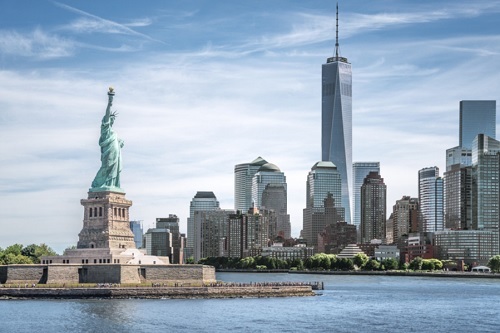Why are they filling New York Harbour with a billion oysters?

Pollution had stripped New York Harbour of its native oyster population. Now volunteers are working to bring them back. A billion of them.
In 1609, Henry Hudson sailed up the river that today bears his name, searching for a western passage to China. Instead, he discovered New York Harbour, one of the planet’s most diverse habitats at that time. And the reason for such natural bounty? Oysters. Hudson’s ship navigated through hundreds of thousands of acres of oyster reefs, which provided a maritime paradise for whales, dolphins, seals, herring and countless other species.
The city that grew up around the bay was famous for its shellfish harvest. New Yorkers, rich and poor, ate oysters by the cartload. But within 300 years of Hudson’s discovery, the bivalve molluscs were gone. Raw sewage and the effluence of the Industrial Revolution had turned the clear waters of the harbour into a toxic brew.
But now they’re coming back. In 2014, two visionaries, Murray Fisher and Pete Malinowski, established something called the Billion Oyster Project, designed to restore New York Harbour to its former glory.
First off, they nurture the oyster larvae in laboratory hatcheries, where the baby molluscs settle on bags of recycled oyster shells, sourced from New York City restaurants. Once mature enough, these bags are transported by up to 13 different reef sites dotted around the harbour – from Coney Island and Jamaica Bay to Brooklyn Navy Yard and beneath Brooklyn Bridge – where staff and volunteers then dive below the surface and install them on steel structures.
Helene Hetrick is one person working on the project. She explains how local high school kids have been inspired to volunteer. “There are now about 100 schools in the harbour area that get involved with the physical process of rebuilding the oyster beds. A billion oysters is just one part of our mission. If there’s nobody to maintain them in 20 or 30 years, then what will we have achieved? These kids are gaining an appreciation for the harbour. That experience is invaluable.”
So far, the project has returned just over 30 million oysters to the waters. “That sounds like a lot, but we still have quite a long way to go,” admits Hetrick. “At the moment, we’re expanding our capacities to install 25 million oysters every season.”
Of course, the billion-dollar question for this billion-oyster project is: when will New Yorkers be eating their own oysters again? Hetrick is realistic. “We have to remind people that we don’t want anyone eating the oysters. It won’t be likely for a very long time either. The problem is that the overflow system of the city’s 19th-century sewers still releases raw sewage into the harbour during heavy rain. The water is cleaner than it has been for more than a century, but the oysters absorb too many toxins as they filter the water.”
Not that those working on the project are averse to the odd bit of shucking. While some of her colleagues prefer them baked, Rockefeller style, Hetrick keeps things simple, slurping them down raw with just a squeeze of lemon juice.
In general, New Yorkers still shuck a huge amount – they are a favourite happy hour snack after a busy day’s work – and the project has stepped in to divert the discarded shells from landfill. “We collect about 8,000lbs (3.6 tonnes) of shells from 75 restaurants every week, which provides a hard substrate for growing the oyster larvae,” Hetrick adds. “Once they have hatched, we allow them to settle on the recycled shells, so they can start growing their own. It gives them a head start.”
Hetrick and her colleagues believe their oyster reefs will offer a further benefit in helping protect New York City from Atlantic storms. “Ever since Hurricane Sandy in 2012, New Yorkers have taken a keener interest in climate change and ways to adapt to the worsening storms,” Hetrick explains. “Oyster reefs are proven to reduce the power of big waves and also limit flooding. Of course, oysters alone can't save the planet. But we really do believe oysters can be part of the solution.”
Authored by MS Amlin
About MS Amlin
MS Amlin is a leading global specialty commercial insurer and reinsurer with operations in the Lloyd’s, UK, Continental European and Bermudian markets.
Comprising Mitsui Sumitomo’s London and Bermuda-based operations and the historic Amlin businesses, MS Amlin specialises in providing insurance cover for a wide range of risks to commercial enterprises and reinsurance protection to other insurers around the world.
It is wholly owned and fully supported by the financial strength and scale of MS&AD of Japan, the eighth largest non-life insurer in the world. To learn more, visit www.msamlin.com.

